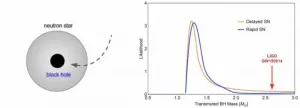(Press-News.org) Artificial intelligence can already scan images of the eye to assess patients for diabetic retinopathy, a leading cause of vision loss, and to find evidence of strokes on brain CT scans. But what does the future hold for this emerging technology? How will it change how doctors diagnose disease, and how will it improve the care patients receive?
A team of doctors led by UVA Health's James H. Harrison Jr., MD, PhD, has given us a glimpse of tomorrow in a new article on the current state and future use of artificial intelligence (AI) in the field of pathology. Harrison and other members of the College of American Pathologists' Machine Learning Workgroup have spent the last two years evaluating the potential of AI and machine learning, assessing its current role in diagnostic testing and outlining what is needed to meet its potential in the not-too-distant future. And that potential is huge, they report.
In their article, the authors describe some amazing possibilities - from an "augmented reality" microscope that automatically identifies and labels important aspects in the field of view in real time to complete diagnostic image classification systems. That type of thing has, until recently, been the domain of Tony Stark and others in sci-fi movies.
In addition to predicting what the future may hold, the authors describe potential obstacles and make important recommendations for how the health-care field can best capitalize on the technology's awesome potential.
"AI and especially machine-learning algorithms introduce a fundamentally new kind of data analysis into the health-care workflow," the authors write. "By virtue of their influence on pathologists and other physicians in selection of diagnoses and treatments, the outputs of these algorithms will critically impact patient care."
Artificial Intelligence in Pathology
Right now, pathology and other health-care applications of artificial intelligence are in their infancy. The federal Food and Drug Administration has approved only a few AI devices for pathology use, mostly for classifying cells in blood and body fluids and for screening cervical tissue, the authors report. But in research labs, scientists are using machine learning to classify and grade lung and prostate cancer, predict outcomes in lung and brain cancers, measure breast cancer proliferation, predict bladder cancer reoccurrence and much more. The authors describe what they're seeing in research publications and early prototypes as "tantalizing."
"Artificial intelligence systems, especially machine learning systems that perform complex image classification, are expected to have significant impact in two areas in which images particularly important, pathology and radiology," said Harrison, director of Clinical Laboratory Informatics at UVA Health and a member of UVA's Department of Pathology. "Pathologists will likely need to choose, verify, deploy, use and monitor AI systems in the future, and therefore they need to learn the strengths and weaknesses of these types of systems and techniques for their effective management."
In addition to projections of future applications, Harrison and his colleagues provide an overview of existing AI algorithms and discuss the development and validation of systems that use AI. Their review also discusses potential concerns about clinical implementation of the technologies, emphasizing the importance of careful validation and performance monitoring to ensure AI is used safely and effectively. The article suggests potential regulations that may be needed along the way. "Creation of a regulatory framework with defined best practices for accomplishing these goals is a necessary step for successful dissemination of machine learning in pathology and medicine," the authors write.
The article does not suggest we'll be receiving care solely from robot doctors anytime soon. Instead, it predicts that the best outcomes in the near future will come from a careful combination of human and machine capabilities. The authors agree with the American Medical Association in describing the goal as "augmented intelligence" that supplements and enhances, rather than replaces, human doctors' judgment and wisdom.
"Our article was written to introduce pathologists and other clinicians to the basics of machine learning and artificial intelligence, including how the systems work and what will be needed to manage them successfully," Harrison said. "As we begin to apply these tools more broadly, doctors will need a practical understanding of when to rely on them, when to question them and how to keep them working well."
INFORMATION:
About the Article
The article has been published in the Archives of Pathology & Laboratory Medicine, the official journal of the College of American Pathologists. The article was written by Harrison, John R. Gilbertson, Matthew G. Hanna, Niels H. Olson, Jansen N. Seheult, James M. Sorace and Michelle N. Stram. All are members of the Machine Learning Workgroup of the College of American Pathologists' Informatics Committee.
To keep up with the latest medical research news from UVA, subscribe to the Making of Medicine blog at http://makingofmedicine.virginia.edu.
In a new paper published in Light: Science & Applications, the group led by Professor Andrea Fratalocchi from Primalight Laboratory of the Computer, Electrical and Mathematical Sciences and Engineering (CEMSE) Division, King Abdullah University of Science and Technology (KAUST), Saudi Arabia, introduced a new patented, scalable flat-optics technology manufactured with inexpensive semiconductors.
The KAUST-designed technology leverages on a previously unrecognized aspect of optical nanoresonators, which are demonstrated to possess a physical layer that is completely equivalent to a feed-forward deep neural network.
"What we have achieved," explains Fratalocchi, "is a technological process to cover ...
Women are largely being excluded from decisions about conservation and natural resources, with potentially detrimental effects on conservation efforts globally, according to research.
A University of Queensland and Nature Conservancy study reviewed a swathe of published conservation science, investigating the cause and impact of gender imbalance in the field.
UQ PhD candidate and Nature Conservancy Director of Conservation in Melanesia Robyn James said it was no secret that females were underrepresented in conservation science.
"In fact, according to a recent analysis of 1051 individual top?publishing authors in ecology, evolution and conservation research, only 11 per cent were women," Ms James said.
"We analysed more than 230 peer-reviewed articles attempting ...
One of the world's rarest tree species has been transformed into a sophisticated model that University of Queensland researchers say is the future of plant research.
"Macadamia jansenii is a critically endangered species of macadamia which was only described as a new species in 1991," said Robert Henry, Professor of Innovation at the Queensland Alliance for Agriculture and Food Innovation (QAAFI).
"It grows near Miriam Vale in Queensland and there are only around 100 known trees in existence."
However, with funding from Hort Innovation's Tree Genomics project, and UQ's Genome Innovation Hub Macadamia jansenii has now become the world's most sophisticated plant research model.
Professor Henry said ...
In a perfect world, what you see is what you get. If this were the case, the job of artificial intelligence systems would be refreshingly straightforward.
Take collision avoidance systems in self-driving cars. If visual input to on-board cameras could be trusted entirely, an AI system could directly map that input to an appropriate action -- steer right, steer left, or continue straight -- to avoid hitting a pedestrian that its cameras see in the road.
But what if there's a glitch in the cameras that slightly shifts an image by a few pixels? If the car blindly trusted so-called "adversarial inputs," it might take unnecessary and potentially dangerous action.
A new deep-learning algorithm developed by MIT researchers is designed to help machines ...
Cancers that are resistant to radiotherapy could be rendered susceptible through treatment with immunotherapy, a new study suggests.
Researchers believe that manipulating bowel cancers based on their 'immune landscape' could unlock new ways to treat resistant tumours.
Cancers can evolve resistance to radiotherapy just as they do with drugs.
The new study found that profiling the immune landscape of cancers before therapy could identify patients who are likely to respond to radiotherapy off the bat, and others who might benefit from priming of their tumour with immunotherapy.
Scientists at The Institute of Cancer Research, London, in collaboration with the University of Leeds and The Francis Crick ...
The public doesn't need to know how Artificial Intelligence works to trust it. They just need to know that someone with the necessary skillset is examining AI and has the authority to mete out sanctions if it causes or is likely to cause harm.
Dr Bran Knowles, a senior lecturer in data science at Lancaster University, says: "I'm certain that the public are incapable of determining the trustworthiness of individual AIs... but we don't need them to do this. It's not their responsibility to keep AI honest."
Dr Knowles presents (March 8) a research paper 'The Sanction of Authority: Promoting Public Trust in AI' at the ACM Conference on Fairness, Accountability and Transparency (ACM FAccT).
The ...
Lowering the operating temperature of solar panels by just a few degrees can dramatically increase the electricity they generate over their lifetime, KAUST researchers have shown. The hotter a panel gets, the lower its solar power conversion efficiency (PCE) and the faster it will degrade and fail. Finding ways to keep solar panels cool could significantly improve the return on investment of solar-power systems.
The long-standing focus of photovoltaics (PV) research has been to improve solar modules' PCE and make solar power more cost-competitive than nonrenewable power ...
What is the origin of black holes and how is that question connected with another mystery, the nature of dark matter? Dark matter comprises the majority of matter in the Universe, but its nature remains unknown.
Multiple gravitational wave detections of merging black holes have been identified within the last few years by the Laser Interferometer Gravitational-Wave Observatory (LIGO), commemorated with the 2017 physics Nobel Prize to Kip Thorne, Barry Barish, and Rainer Weiss. A definitive confirmation of the existence of black holes was celebrated with the 2020 physics Nobel Prize awarded to Andrea Ghez, Reinhard Genzel and ...
To effectively fight off SARS-CoV-2, the immune system depends on both antibodies and T cells, a type of white blood cell, which work together to eradicate the virus. However, little was known about virus-specific T cells in asymptomatic patients.
"We now know that many people are getting infected with SARS-CoV-2 without realising it, as they stay healthy and don't develop any symptoms. These asymptomatic infections may provide the key to understanding how the immune system can control the virus without triggering pathological processes," explained Dr Nina Le Bert, Senior Research Fellow ...
A Korean research group has developed a technology that allows for the differentiation of stem cells into desired cell types, such as vascular mural cells or osteoblasts, without special pretreatment. This technology is expected to facilitate the production of artificial organs for preclinical studies or artificial tissues for transplants such as artificial skin and cardiac patches.
The Korea Institute of Science and Technology (KIST) announced that the research group led by Dr. Youngmee Jung of the Center for Biomaterials has developed a new cell co-culture platform ...




